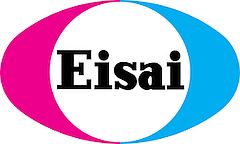|
| Friday, 27 November 2020, 21:05 HKT/SGT | |
| |  | |
Source: Eisai | |
|
|
|
|
| A fully Human Anti-TNFalpha Monoclonal Antibody, for the treatment of pyoderma gangrenosum for the first time in the world |
TOKYO, Nov 27, 2020 - (JCN Newswire) - AbbVie GK and Eisai Co., Ltd. today announced an approval of additional indication of HUMIRA (generic name: adalimumab [recombinant], hereafter "HUMIRA"), a fully human anti-TNFalpha monoclonal antibody, for the treatment of pyoderma gangrenosum (hereafter "PG"). HUMIRA was granted orphan drug designation for the treatment of PG in 2019. This indication counts for HUMIRA's 12th indication in Japan and makes HUMIRA the world's first drug indicated for the treatment of PG.
This approval of the additional indication is based on the data from the Japanese phase III clinical trial(1) conducted in Japanese patients. This study was conducted to evaluate the efficacy and safety of HUMIRA targeting the patients with active ulcers in Japan who were diagnosed with PG but were not sufficiently effective with local treatment, or who were judged to be unsuitable for local treatment. The proportion of patients achieving at 100 (targeted PG ulcer healed) of the target pyoderma gangrenosum ulcer area reduction (PG Area Reduction: PGAR) at Week 26 of administration, which is the primary endpoint of this trial, was 54.5% (12 of 22 patients)1. The most common adverse drug reactions in patients receiving HUMIRA were skin bacterial infection(1).
PG is an inflammatory skin disease that rapidly progresses after its onset and is classified into the following 5 types: ulcerative type, bullous type, pustular type, vegetative type, and a type that develops around a stoma(2). In ulcerative PG, the most common type, appears as painful, pustules, papules and nodules in the lower extremities, especially in the lower legs, and efferently expands to form raised ulcer lesions with infiltration on the margins(3). The ulceration accompanied by intense pain and is known to cause serious effects on patients' quality of life (QOL)(4). Although the pathogenic mechanism of PG is not fully understood, it is reported that approximately 20-30% of PG cases are caused by a slight injury or an external stimulus(5). PG mostly affects people in their 50s to 70s, and its incidence is reported to be 3.0 per million/year in Japan(6).
AbbVie and Eisai are committed to further contribute to the improvement of QOL of many more patients by making efforts to promote the appropriate use of HUMIRA, including its use for this indication, and to provide information on HUMIRA.
(1) ClinicalTrials.gov Identifier: NCT03311464. Unpublished data on file.
(2) Yamamoto T: J Dermatol, 130(6), 1439-1448, 2020
(3) Idemitsu T. Medical diseases seen in 110 cases of skin symptoms: 7(4), 138-139, 2018
(4) Ormerod AD, Thomas KS, Craig FE, Mitchell E, Greenlaw N, Norrie J, Mason JM, Walton S, Johnston GA Williams HC; UK Dermatology Clinical Trials Network's STOP GAP Team.. 2015 Jun 12; 350: h2958. doi: 10.1136/bmj.h2958.
(5) Callen JP, Jackson JM: Pyoderma gangrenosum: an update, Rheum Dis Clin North Am, 2007; 33: 787--802.
(6) Yamamoto T: J Dermatol, 46: e145-e146, 2019
Topic: Press release summary
Source: Eisai
Sectors: BioTech
http://www.acnnewswire.com
From the Asia Corporate News Network
Copyright © 2025 ACN Newswire. All rights reserved. A division of Asia Corporate News Network.
|
|
|

|